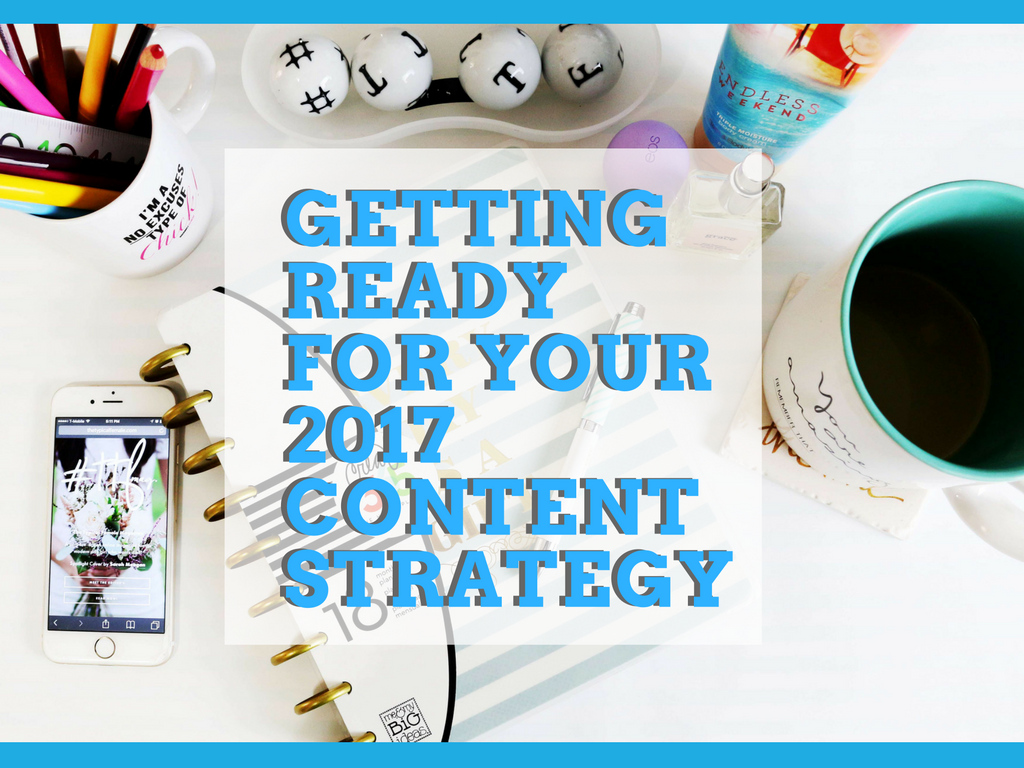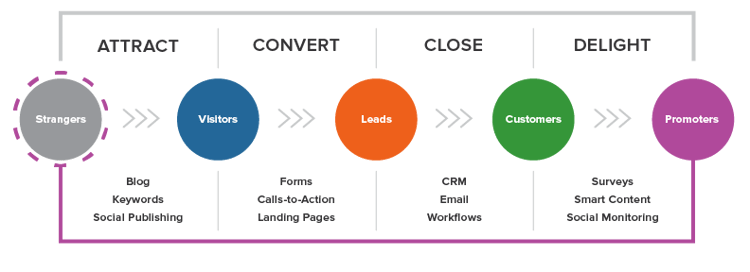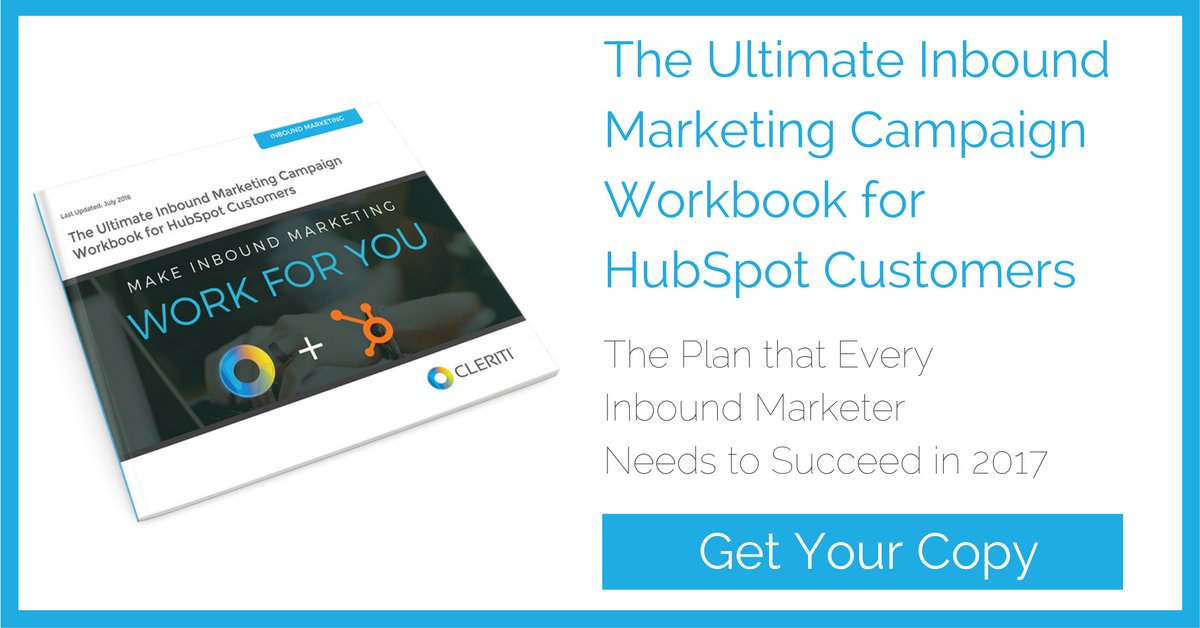- Oct 19, 2016
- By Lauren Lutz
- In Content Marketing
Getting Ready for Your 2017 Content Strategy

In the Content Marketing Institute’s 2016 Benchmark Report, 88% of B2B respondents stated that their organizations produce content. However, only 30% of respondents claimed that their content is actually effective. Where’s the disconnect? In my experience working with a variety of B2B organizations, content production fails to produce content engagement when there is a lack of cohesive strategy. Put simply, you can’t just create weekly blogs and hope for the best. If you want results, you need content goals, guidelines and documentation when you plan your inbound marketing campaign.
Recap: The Goal of Creating Content
Here’s a quick refresher from Hubspot on the definition of inbound marketing:
Inbound marketing is about using marketing to bring potential customers to you, rather than having your marketing efforts fight for their attention. Sharing is caring, and inbound marketing is about creating and sharing content with the world. By creating content specifically designed to appeal to your dream customers, inbound attracts qualified prospects to your business and keeps them coming back for more.
In a nutshell, when applied to inbound marketing, an effective content strategy achieves the following results:
- Engagement with your target audience
- Increased traffic to your website
- A flow of ideal contacts through your marketing funnel
Take a look at how blogs play into the inbound methodology during the initial “Attract” stage

The ultimate goal is to leverage blog posts and other content to turn unknown web browsers into website visitors, and then offer up an advanced piece of content (think whitepaper, eBook, webinar) that is valuable enough to entice them to hand over their contact information. Then, you can nurture those leads with email, phone calls and other sales tactics to convert them to customers. In theory, it’s a seamless process. However, marketers know that marketing doesn’t happen with the flick of a magical wand — it takes work, and it takes strategy.
Why Do So Many Marketers Struggle to Develop a Cohesive Content Strategy?
Here’s a quick look at some common high-level reasons:
- They’ve never done it before.
- They don’t have the time.
- They don’t know what successful content looks like.
- They think quantity is more important than quality.
- They don’t know what their audience wants.
For many organizations, overcoming these obstacles isn’t exactly easy, but putting in the work is worth it. The Content Marketing Institute’s 2016 Benchmark Report notes just how important having a content strategy is: 53% of the most effective marketers have a documented content marketing strategy while 40% of the least effective marketers have no strategy at all.
What type of content strategy leads to more effective inbound marketing?
Content Strategy for Planning Your Inbound Marketing Campaign
Some marketers follow the mantra that focusing on blog creation and SEO is the way to get results. In a broad sense, that works, but there’s a bit more to content strategy than simply pushing out blogs that contain keywords that resonate with your ideal audience. Here are some steps to developing a content strategy that will take your inbound marketing efforts to the next level.
Step 1: Your Content Can’t Be Everything for Everyone
Casting a wide net with your content isn’t the best way to engage your ideal customers. In a recent Contently article, Editor in Chief Joe Lazauskas notes the importance of building trust with your target audience, “Content marketing is really like a political campaign. You have to introduce yourself to people and earn trust.” At Cleriti, we don’t begin to develop any content strategy without first building out a detailed buyer persona, allowing us to center all content topics around that ideal buyer. The result? Our content is more authentic to that particular person, fostering credibility for the company publishing the posts.
When we create buyer personas, we follow a few simple rules:
- Dive deep into their motivations, desires, needs and challenges.
- Paint the clearest picture possible to nail down a tone that will resonate with them.
- Flesh out their change drivers so you can strategically encourage action.
This persona research is a fundamental part of producing valuable content that nurtures meaningful connections, leading to conversions that count. Document the information in a template and save it for reference. HubSpot has a great resource for building personas.
Note: You can have more than one buyer persona, just make sure you have separate campaigns for each one.
Step 2: Context Is Key
The next step to creating a content strategy that works is developing a theme. Cleriti strategy teams work on a quarterly basis, creating 3-month calendars that keep every piece of content we create in line with a certain theme — which focuses on a pain point, challenge or need of the buyer persona — for that time frame. I like to think of the theme as an umbrella topic; it’s broad and has many subtopics within it. By choosing a theme, we ensure every blog post has a purpose and covers a specific topic within the greater focus.
At Cleriti, our keyword research for campaign themes is contextual. We check out how other similar content uses keywords and focus on terms our buyer personas would most likely be using online. Keyword research works differently for every business, and every business uses different tools, but remember that context is key. We choose one root keyword, and 12 long-tail keywords to toss in over the quarter.
For more information on keyword research, download our Inbound Marketing Campaign Planning Workbook.
Step 3: Put in Some Research
It’s essential to do research at the “watering holes” where your persona goes for information and education. Targeting a CIO? You can probably research topics they’re interesting in reading at cio.com. Want to engage a VP of sales? Check out the Forbes Sales Leadership articles. Gather up as much insight into what content they like to consume online as you can, and start teasing out topics that fit into your campaign theme. You can use these articles as supporting research as you create blog posts.
Step 4: Hold Yourself Accountable
The final step in getting your content strategy ready for planning your next inbound marketing campaign is documenting your content plan. We’re dedicated to building and consistently following content plans at Cleriti. Why? If we hold ourselves accountable for producing certain blog posts on certain days, we stay on track. Our content plans lay out the following details for weekly blog posts:
- Catchy title
- Metadescription with a keyword included
- Author
- Advanced content offer CTA for the bottom of the post
- Creation/review date
- Publish date
You can get a copy of our template in our Campaign Planning Workbook.
Setting Yourself Up for an Effective 2017
While this post doesn’t lay out all the nuts and bolts of planning effective inbound marketing campaigns, it gives you the information you need to develop a content strategy that will help your campaign be more successful. Turn over a new leaf in 2017 and start producing content that resonates with your audience. Over time, you’ll be rewarded with more qualified leads, loyal blog traffic and increased inbound marketing results.





